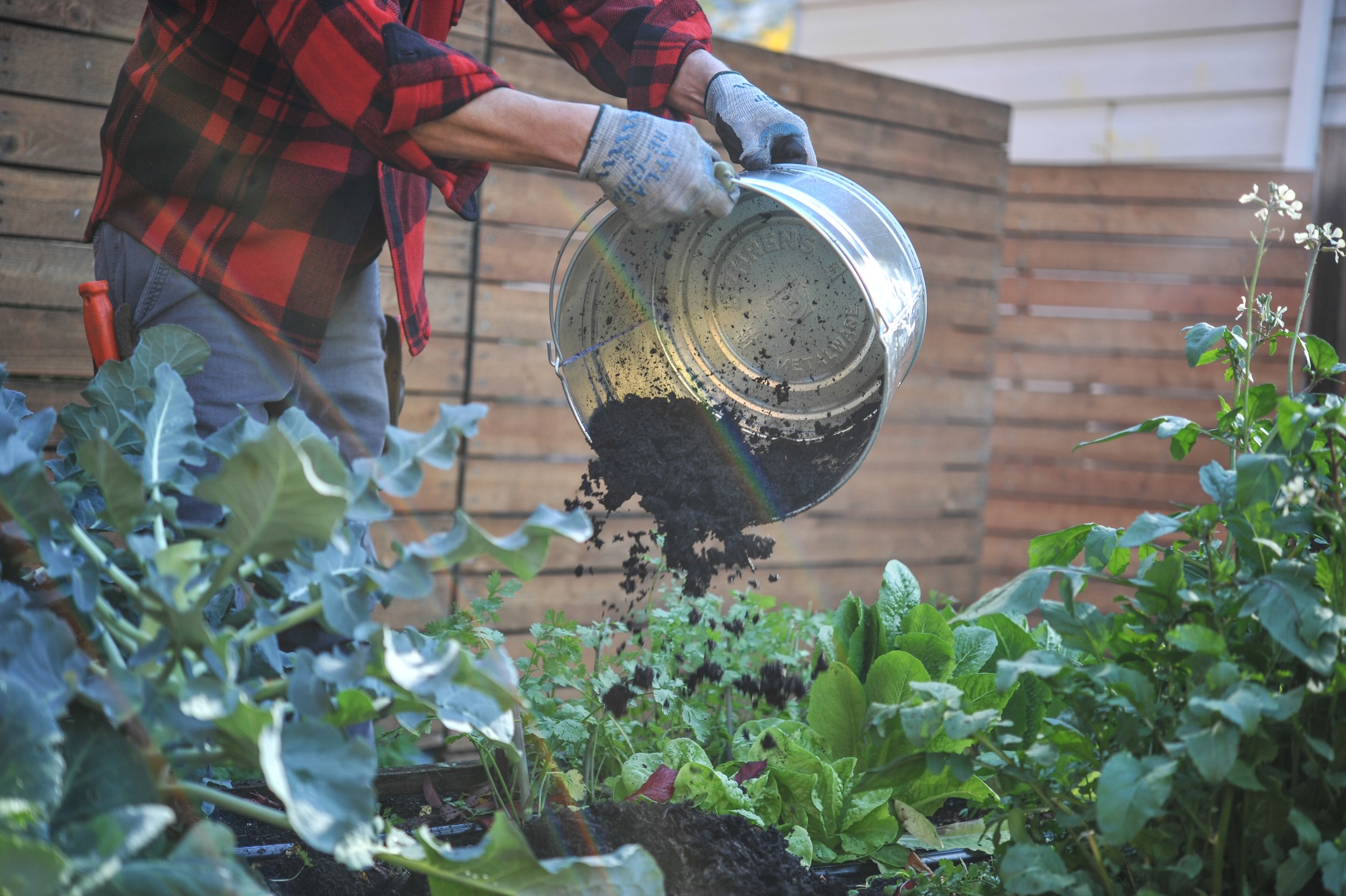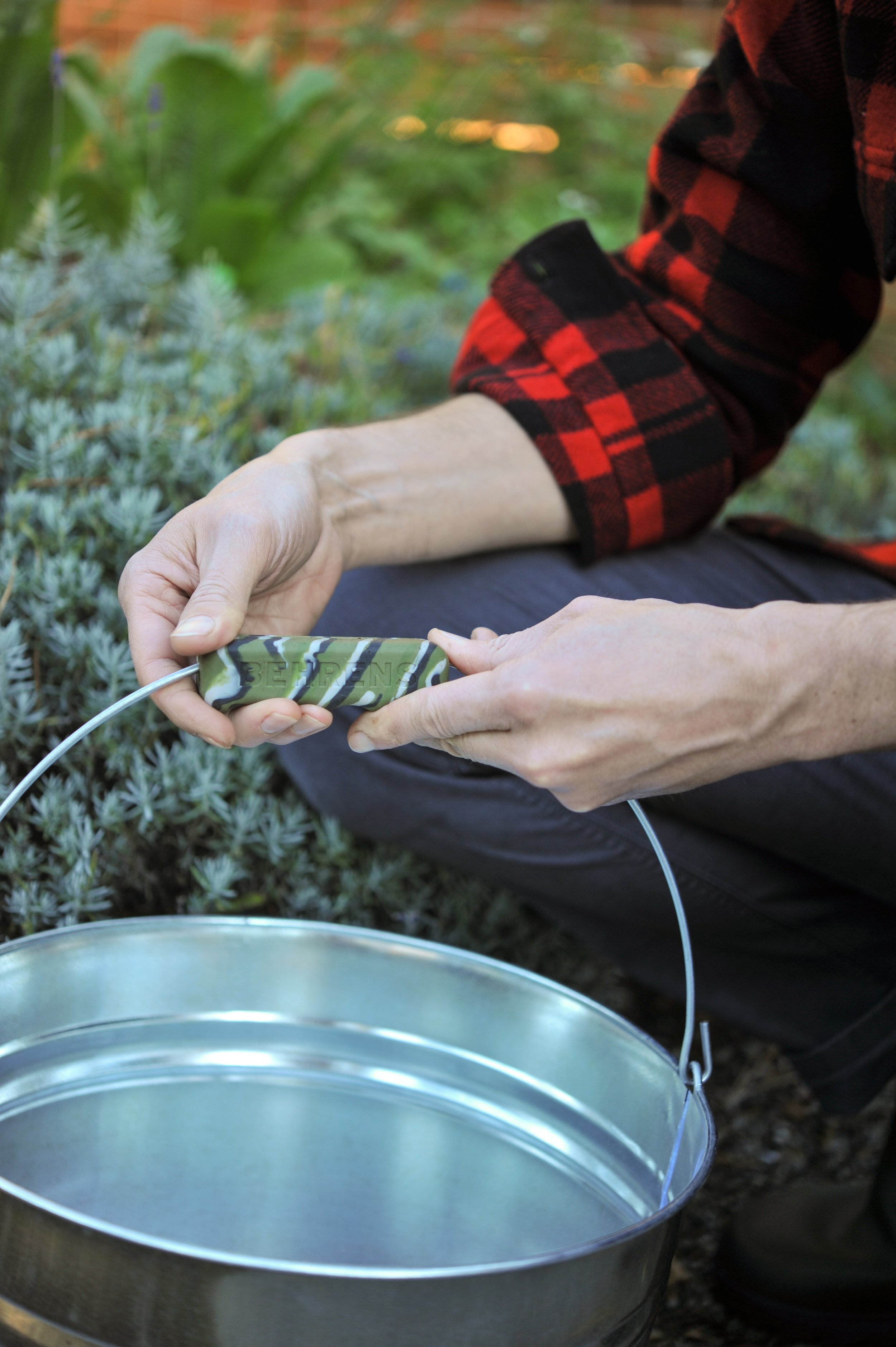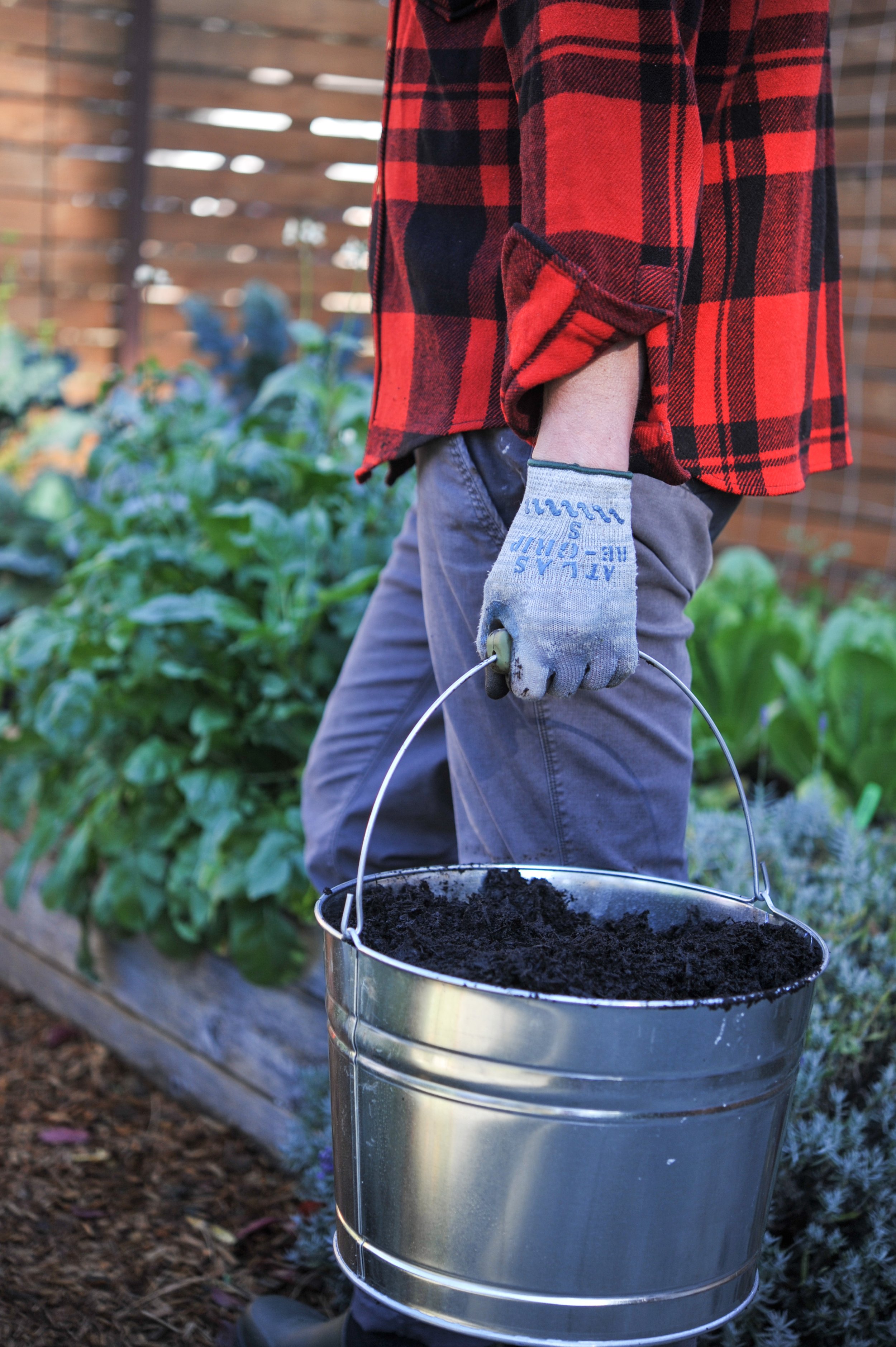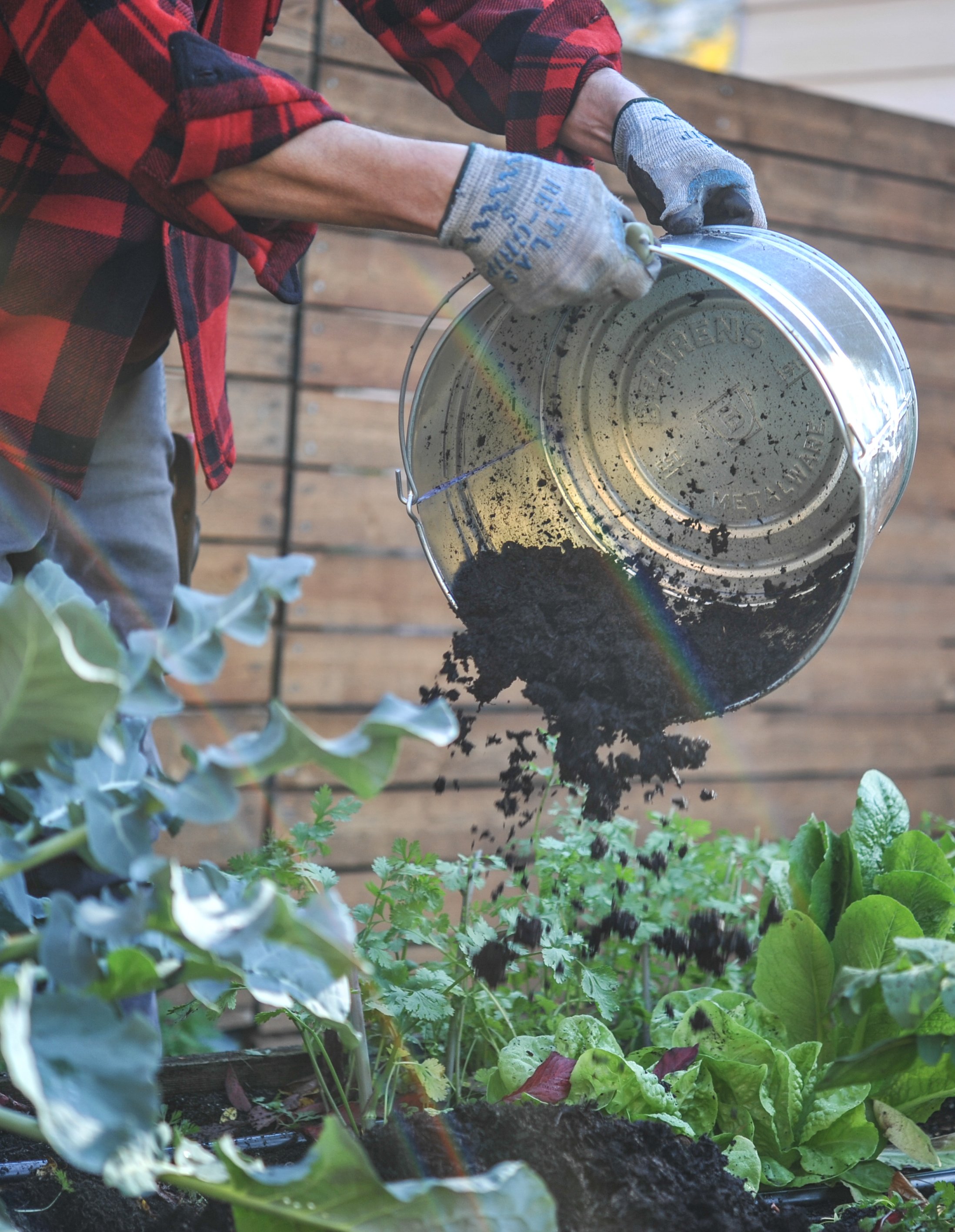Garden soil loves to get dressed up. Instead of a tuxedo or gown, spruce up your beds with a stylish layer of compost, cover crops and straw. Covering your soil in this way is called mulching, and it keeps your garden soil protected from the elements. Protected soil helps maintain a healthy population of beneficial mycorrhizal fungi and other essential garden life. Leaving your soil bare during winter can be especially problematic because heavy precipitation can leach nutrients, acidify the soil’s pH, and compromise its structure.
What are mycorrhizal fungi and why should I care about their presence in my soil? Simply put, mycorrhizal fungi are a fungus (Myco) that attach to the roots (rhiza) of your plants. This relationship is symbiotic, meaning that it's advantageous for both organisms. Mycorrhizal fungi enhance the water absorbing efficiency and nutrient-uptake capacity of your crops.
Covering your soil with an organic mulch in the winter will provide a physical barrier that protects against nutrient leaching and helps preserve beneficial organisms. Fortunately, there are many soil-protecting mulches available. You can either use an organic material like straw or a “living mulch” made from cover crops. Let’s take a look at both options:
Cover crops:
A cover cropping mix of oats and field peas.
Cover cropping generates organic matter, protects the soil and captures nutrients. They’re often planted in late summer and fall, so that the crop is mature enough to offer good protection for the winter. Many gardeners use a combination of a leguminous cover crop and a grass. The legume fixes nitrogen from the air and adds it to the soil, and the grass supplies carbon to balance the nitrogen from the legume. Popular cover crop combinations include rye/vetch and oats/field peas.
Even though cover crops are incredible soil-builders, in many situations, it may not make sense for the home gardener because it can be tricky to get the timing just right. To grow a successful cover crop, you need to allow enough time for the crop to grow large from seed and cover the soil by the end of your growing season. Cover crops either “winter kill”, meaning that they die when exposed to cold winter weather, or are mowed and turned into the soil in the early spring. In either situation, cover crops usually take between three to five weeks to break down after they’ve been turned into the soil. During this time, they can tie up valuable production space in the spring. So if your garden is planted in cover crops, it can be challenging to plant early-season spring vegetables.
Cover cropping works best in larger gardens or in gardens where some beds are not in production for the season. If you have a smaller garden and want to keep all of your summer crops in place until the very end of the season, you may not have time to plant a winter cover crop. To grow cover crops in a fully-planted garden, you'll need to do one of the following: pull some of your summer and fall crops early, or plant next spring’s crops late.
One easier-to-manage winter cover crop is fava beans. Favas can be planted late in the fall and provide benefits to the soil as well as a spring harvest. In our growing region, the Pacific Northwest, fall-planted fava beans typically mature in early-mid May. Just in time to be replaced by summer crops like tomatoes and peppers.
Clear all of the crops that you don’t want to overwinter in your garden.
Organic mulches
A simple application of straw or compost is much less management intensive than growing cover crops. Organic mulches are easy to find, easy to apply and provide many of the same benefits as a well-grown cover crop.
Compost is our go-to winter garden mulch. High-quality compost is readily available in many parts of the country. It works well with our growing season, which tends to extend late into the fall, and start up again early in the spring. We also work in a lot of smaller gardens (most are less than 1,000 square feet), so we want to be ready to use all of that space first thing in the spring.
Just like the soil underneath, nutrients can be leached from compost during the winter. However, a 2-3” layer of compost creates a protective barrier between your soil and winter precipitation. It has the added benefit of making the soil easy to plant into the next season. There’s no need to work the soil or remove the mulch, you just seed or transplant right into your beds. If you don’t get around to winter mulching, you can add it at any point in the season, it’s always a good time to add compost to the garden.
Many gardeners struggle with making their own compost, and this is especially true for gardeners in urban environments. If you don’t have access to quality materials for your compost pile, it can be difficult for you to build a large top-notch pile from scratch. If this is the case, don’t worry. There’s nothing wrong with buying compost. Ideally you will be able to locate a locally produced compost product that is made specifically for vegetable gardens. Avoid compost that is typically sold for use on ornamental beds, as it’s likely to contain lots of high-carbon materials (undecomposed wood and bark), which can reduce the availability of nutrients for your plants.
Obviously, a certified organic product will help ensure quality ingredients, but well-made compost does not need such a certification to be a great product. Talk to the provider and learn how the product is made and what it is made from before purchasing it. Generally speaking, compost made with animal manure will provide more usable nitrogen, phosphorus, and potassium. Compost made strictly with plant waste is still a great source of organic matter, but will supply less of these nutrients.
Other great winter mulches:
Grass clippings: Apply a 2-3” layer to the top of your beds. It can be turned into the soil in spring.
Hardwood leaves: Use a thick layer for winter protection (4 to 6 inches). Avoid turning into the soil so as not to tie up nitrogen; instead, rake off remaining mulch and compost.
Shredded hardwood leaves: Can be turned directly into the soil in the spring to add organic matter and nutrients.
Rolled burlap or burlap sacks: Don’t turn these into the soil! Instead, store and reuse next year. Works for mid-season mulch, but can be difficult to lay in between plants.
Straw: Use a thick layer (4 to 6 inches). Avoid turning into the soil in the spring so as not to tie up nitrogen; instead, rake off remaining mulch and compost or reapply when crops begin to mature. Whether or not your straw supplier is certified organic, it’s important to verify that the straw you’re buying was not sprayed with herbicides. Chemical herbicides can persist for some time, and unwittingly adding them to your garden via straw may lead to years of problems.
Whatever mulch you choose, your soil will be happy, provide you with healthier crops and look great doing it!












